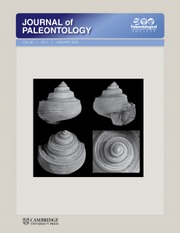Article contents
The rangeomorph fossil Charnia from the Ediacaran Shibantan biota in the Yangtze Gorges area, South China
Published online by Cambridge University Press: 06 December 2022
Abstract
The terminal Ediacaran Shibantan biota (~550–543 Ma) from the Dengying Formation in the Yangtze Gorges area of South China represents one of the rare examples of carbonate-hosted Ediacara-type macrofossil assemblages. In addition to the numerically dominant taxa—the non-biomineralizing tubular fossil Wutubus and discoidal fossils Aspidella and Hiemalora, the Shibantan biota also bears a moderate diversity of frondose fossils, including Pteridinium, Rangea, Arborea, and Charnia. In this paper, we report two species of the rangeomorph genus Charnia, including the type species Charnia masoni Ford, 1958 emend. and Charnia gracilis new species, from the Shibantan biota. Most of the Shibantan Charnia specimens preserve only the petalodium, with a few bearing the holdfast and stem. Despite overall architectural similarities to other Charnia species, the Shibantan specimens of Charnia gracilis n. sp. are distinct in their relatively straight, slender, and more acutely angled first-order branches. They also show evidence that may support a two-stage growth model and a epibenthic sessile lifestyle. Charnia fossils described herein represent one of the youngest occurrences of this genus and extend its paleogeographic and stratigraphic distributions. Our discovery also highlights the notable diversity of the Shibantan biota, which contains examples of a wide range of Ediacaran morphogroups.
UUID: http://zoobank.org/837216cd-4a4a-4e13-89e2-ee354ba48a4c
- Type
- Articles
- Information
- Copyright
- Copyright © The Author(s), 2022. Published by Cambridge University Press on behalf of Paleontological Society
References
- 7
- Cited by



